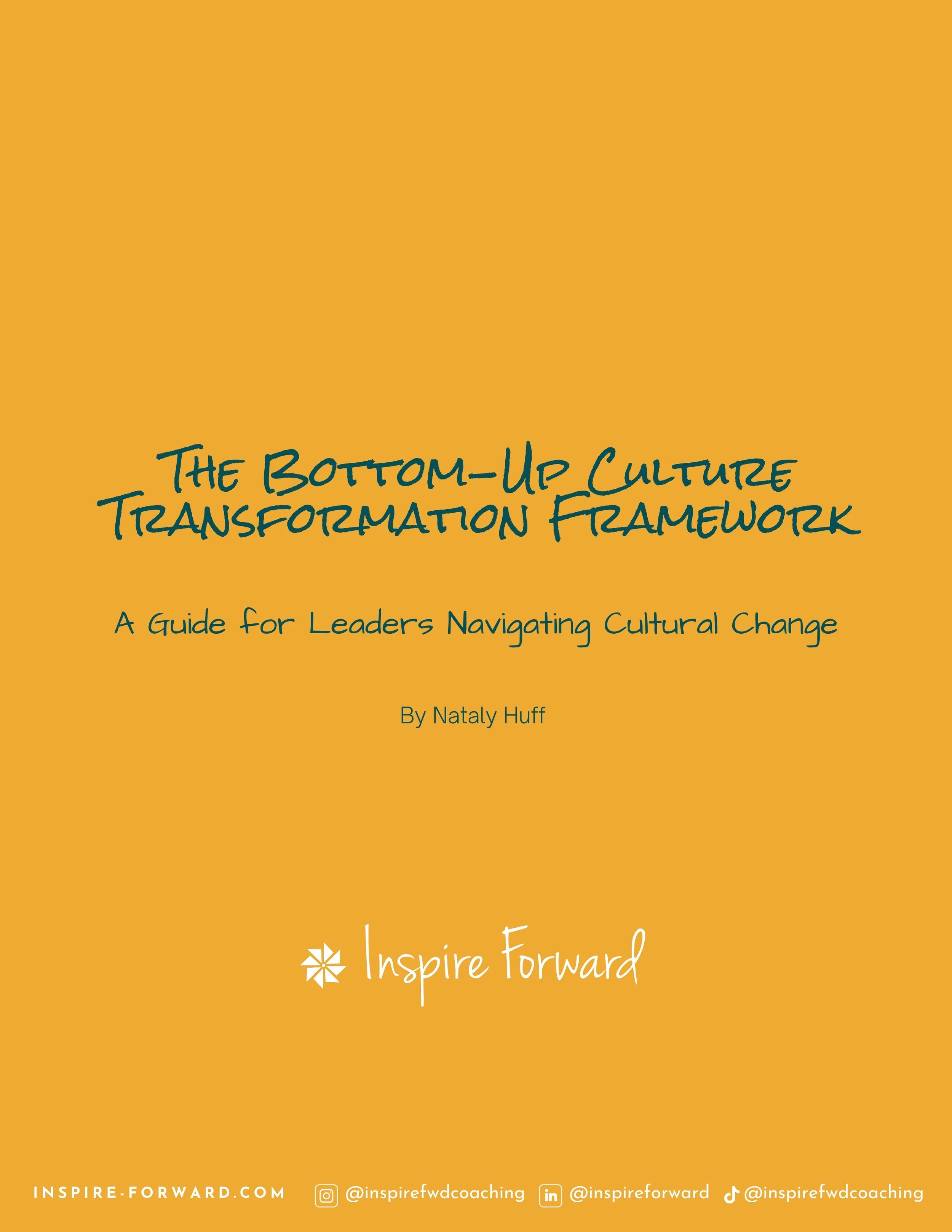Why Most Culture Initiatives Fail (And What Actually Works)
I'll never forget the moment I realized we'd been approaching culture transformation completely backwards.
Sitting in yet another leadership meeting, watching our latest "culture initiative" generate polite nods and behind-the-scenes eye rolls, it hit me: We were doing change TO our people instead of WITH them.
The statistics confirm what most leaders suspect but rarely admit—most culture transformation efforts fail. But here's what the research also reveals: when employees design the change themselves, adoption rates increase dramatically.
The Top-Down Trap We All Fall Into
It seems logical, doesn't it? Leadership identifies cultural problems, designs solutions, announces implementation. Clean. Efficient. Doomed to fail.
I learned this working with a health services organization that had tried multiple top-down culture initiatives. Each started with enthusiasm and ended with resignation. Teams complied halfheartedly while engagement scores remained stubbornly flat.
Then we tried something different.
When Teams Become Architects of Change
Instead of mandating what needed to change, we asked teams what would make the biggest impact. Instead of prescribing solutions, we facilitated their problem-solving.
Something remarkable happened: employees spontaneously formed cross-departmental groups. They developed cohesive recommendations that addressed organizational-wide challenges rather than departmental symptoms.
The results spoke for themselves—a 20% increase in employee engagement and the highest scores across their global organization
The Neuroscience Behind Bottom-Up Success
There's fascinating brain science that explains why this approach works. When change feels imposed, the amygdala triggers threat responses. Teams resist because their brains are literally wired to protect against external threats.
But when people participate in creating change, reward centers activate. Dopamine and oxytocin release, fostering genuine commitment. The prefrontal cortex engages, creating stronger neural pathways for sustained behavioral change.
This isn't just theory—it's measurable. Studies consistently show that employee-driven initiatives achieve significantly higher adoption rates than leadership mandates.
Four Pillars That Actually Transform Culture
Through years of implementation across different organizations, I've identified four essential elements that turn culture transformation from wishful thinking into measurable results:
Collaborative Vision Setting transforms team input into actionable objectives without creating complaint sessions. The key is framing discussions as future-focused opportunities while creating psychological safety for honest feedback.
Personal Accountability Integration eliminates the bystander effect by connecting individual goals to cultural vision. Research shows this approach dramatically decreases the "someone else will handle it" mentality.
Recognition Systems that go beyond random appreciation create systematic reinforcement. Teams with structured recognition programs experience measurably lower voluntary turnover and greater effectiveness at engaging employees.
Purpose Connection links daily work to broader impact through storytelling and shared experiences. Employees who connect their role to deeper meaning report significantly higher job satisfaction.
The Implementation Reality
Here's what I've learned from working with organizations of all sizes: sustainable culture change doesn't happen through grand announcements or motivational speeches. It happens through systematic, employee-driven transformation that addresses the human psychology of change.
The most successful transformations start with leadership brave enough to ask, "What do you think needs to change?" and patient enough to let teams design the solutions.
Your Culture Transformation Starts With a Question
Organizations with strong cultures deliver measurably better business outcomes. The question isn't whether culture impacts your results, it's whether you'll continue using approaches that create resistance or embrace methods that generate ownership.
The framework that guided our 20% engagement increase isn't complex, but it is systematic. It requires shifting from mandating change to facilitating it, from prescribing solutions to enabling problem-solving.
If you're ready to transform your culture from the inside out, I've documented the complete approach, including step-by-step implementation guides, measurement strategies, and common objection responses, in a comprehensive framework guide.
Because your teams deserve better than another failed culture initiative. They deserve to be the architects of the change they want to see.
Nataly Huff is an executive coach who specializes in brain-based, heart-centered leadership development. Her culture transformation framework has helped organizations achieve measurable engagement improvements while building sustainable change from within.


